Ahhh yes, it’s the most wonderful time of the year! That magical time in between black Friday and Christmas when retailers are absolutely desperate to sell you stuff so they can make their year-end numbers work. As a result, there are many good deals to be had especially when it comes to music equipment. I’ve tried to compile a list of all the best gear available on the market so you can take advantage of the sales for yourself or that special music producer in your life who deserves a new toy in the arsenal. I’m using pricing from Sweetwater.com because they usually have the best prices (and unusually thorough customer service).
Not everything on this list will be for everyone, musicians are particular creatures with particular tastes… but I’ve been collecting gear for 10 years— I’ve been building it for 4. I produce music for TV and the internet (I hear your sarcastic applause, thank you, thank you, the freelance life is a glorious one). I’ve had the good fortune to use some of the most premier recording facilities in Los Angeles and I’ve been able to talk with some of the worlds foremost experts in signal flow and analog electronics. I was at NAMM this year. Most importantly, I’m not sponsored by any of these companies so all of this information is based solely on my personal experiences over the last decade of touring, gigging, and recording along the west coast. These are all, like, my opinions man. You know? So chill out, okay? (If you want to tell me how I’m wrong and I suck, that’s why I’m on Twitter! Get @ me)
Let’s get to it:
Audio Interfaces
The number one gear question I hear these days is “which audio interface should I get?” After all, this is the connection between your computer and your instruments / speakers… it’s essential. Luckily, we live in world where even the most budget audio interfaces are going to achieve desirable results. The days of worrying about bit depth and digital-audio conversion are gone and all you really need to worry about is “how many inputs and outputs do I want?” If all you need is one or two inputs at a time, the Presonus AudioBox or Focusrite Scarlett are likely to fit the bill without spending an extra $500 on something like Apogee Duet (though the Duet is easier to use right out of the box… $400 easier? You decide).
Presonus FireStudio Project
I think this might be one of the most underrated pieces of equipment on the market EVER. I actually bought the old version of this (called the “Firepod” later changed to the “FP10” and now “FireStudio Project”… lol Presonus) in 2005 while I was still in high school. Little did I know this baby would stand up to countless gigs, beer spills, mobile recording sessions and even a trip to Burningman. This thing survived my entire college experience and I’m proud to say it currently sits compactly in a single rack slot in my studio as my main interface kicking ass and taking names. The headphone amp BANGS. The preamps on the first two channels are beautifully transparent with the ability to overdrive and add warmth, phantom power across all 8 front XLR/1/4″ inputs, INDIVIDUAL OUTPUTS FOR EACH INPUT (so you can route to outboard FX chains). Midi in/out. 10 inputs so you can record an entire LIVE BAND ALL AT ONCE. HOLY SHIT AND IT’S ON SALE FOR $299. In 50 years, people are going to look back on these like we look back on Neve consoles now. I can’t say enough good things about it.
Monitors (Speakers)
If you give a mouse an audio interface, he’s going to want some monitors to go with it. Unlike the interface question, monitors are lot more tricky because:
1. Everyone’s ears and preferences are different
2. The sound quality will depend entirely on how they speakers with the room in which they’re placed.
With studio monitors, a producer generally wants a “transparent” sounding speaker that doesn’t color the sound too much– what’s known as a “flat response.” You don’t want a speaker that lies to your ears by making the music sound better than it really is; the familiar white Yamaha NS10s became a studio staple in the late 70’s because of the old saying, “if it sounds good on NS10’s, it’ll sound good on anything” (they sound just awful). We’ve done a lot better at transparency since the NS10s but more often than not, producers tend to disregard good practice when it comes to acoustic treatment and speaker placement which defeats the purpose of having high-quality studio monitors.
If you’re looking to upgrade your current monitors please first read Ethan Winer‘s article on “Room Setup” (this is some real trap shit) and consider first positioning your monitors correctly and treating the acoustics of your room with Owens Corning 703 rockwool “traps” and “sound panels.” (There are simple plans online if you don’t have anyone local to order from. Here in LA I’ve been very impressed by LASoundPanels.com who offer very high quality 24x48x4″ bass traps starting at $75). With proper room setup and bass management, you’ll be amazed at how deep and clear your 5″ woofers can sound and you’ll be totally ready when you do decide to drop $700+ on some new speakers.
phew! with that out of the way, these are my favorites:
Adam A7x
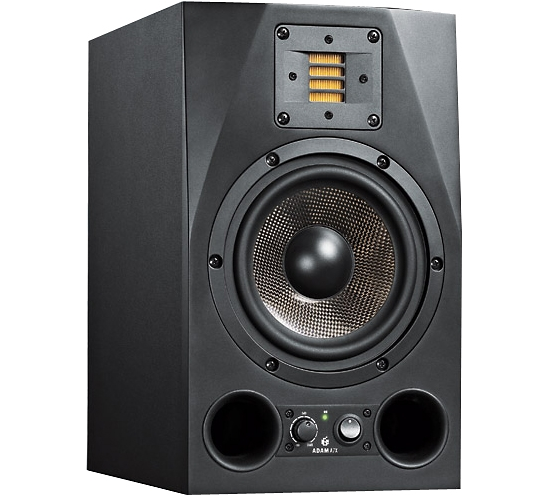 These have become the standard for making pop and electronic music. The ribbon tweeter is capable of incredible detail without becoming harsh which is why people say you can mix on this speaker for a long time without experiencing “listening fatigue” and needing to constantly turn up the volume on the mix. The 7″ woofer is surprisingly deep and powerful compared to 8″ competitors but unfortunately Adam just filed for bankruptcy (apparently a result of making too many high quality products too quickly) so prices are likely to increase while the company restructures and spare parts are in high demand. At $750 each, these are definitely on the pricey side of the spectrum. I like nice shit.
These have become the standard for making pop and electronic music. The ribbon tweeter is capable of incredible detail without becoming harsh which is why people say you can mix on this speaker for a long time without experiencing “listening fatigue” and needing to constantly turn up the volume on the mix. The 7″ woofer is surprisingly deep and powerful compared to 8″ competitors but unfortunately Adam just filed for bankruptcy (apparently a result of making too many high quality products too quickly) so prices are likely to increase while the company restructures and spare parts are in high demand. At $750 each, these are definitely on the pricey side of the spectrum. I like nice shit.
Genelec 8040
Speaking of nice shit, I’d be remiss in not offering up my favorite almost-affordable monitor, the Genelec 8040. The woofer is only 6.5″ and they look kind of lame but these puppies are far and away the nicest near-field you’ll ever come across… and that’s exactly what you might expect for a mere $1345 each ON SALE. But in a treated room, even the most discerning mix engineer will appreciate the depth and clarity these offer across an impressively broad spectrum. I can’t ****ing afford these.
Event 2030
I can afford these though! Event really stepped the game up with the introduction of their affordable 3-way monitors, the 2030‘s. They’re sold as a stereo pair (there are specific left and right speakers) and offer 3 individual drivers for low end, mid range, and treble respectively. While the 7.5 in woofer may be disappointing to some, the 2030’s have an astoundingly wide and clear stereo image that makes panning a joy, especially for mixes that have a lot of instruments that require staging like orchestral pieces. These are mid-field monitors meaning they’re meant to be listened from a greater distance than near-fields so they’ll interact more with the acoustics of the room– but adjustable high and low shelf controls in the back can help you tackle the most stubborn reflections/modes. Considering that you can bargain the price down to just under $1000, these were most attractive to me considering the breadth of my work and the amount of space at my disposal. They certainly aren’t for everyone but if you have a large enough, treated room, you’ll be hard pressed to find as transparent and detailed a speaker at such a price point.
Equator D8
Another little-known secret of the professional recording world, Equator makes the highest-quality, most affordable studio monitors on the market. If you’re looking to upgrade those shitty M-Audio Bx5a’s (jokes, you can make some bangers on those little guys, no hate at all towards the bx5 ), these are the place to start. They’re able to offer their gear at better prices because they save overhead spending on retail outlets and marketing , you order directly from them and I’ve been told they offer amazing customer service. Each D8 is carefully tuned to perform with professional quality precision and they use DSP to improve the crossover performance so you end up with unmatched, silky-smooth response and plenty of thump from the 8″ woofer. This is the near-field you want to upgrade to. They’re so confident, they offer a 60-day money-back guarantee so you can try them out IN YOUR ROOM. And guess what? They’re $749 PER PAIR! Not each, BOTH OF THEM FOR $749. It’s certainly no small amount of money but considering each of the other speakers on this list have been $500+ EACH, that’s a serious price point worth looking at. I thought they were a little too brilliant in the mid range for my liking but the bass response is impressive and the unique coaxial speaker (tweeter and woofer all in the same spot!) is capable of creating an unusually wide stereo image for near fields.
Keyboards / Controllers
Alright, we’ve got the interface and speakers, time for some sounds! Drawing out notes on the piano roll is okay but when you want to unleash the beast, you need some keys to play and some buttons to mash! Unfortunately, this is where my musical snobbiness comes into play– I grew up playing on a Steinway and currently own not one but TWO grand pianos so I’m picky when it comes to how a keyboard feels. I’m just going to go out on a limb and say :
Pretty much all specifically “midi keyboards” are ****ing disgraceful, overpriced pieces of shit. Buyer beware. If you see the words “synth action” or “semi-weighted” or “full-size” in the description of a midi keyboard you can be guaranteed what they’re really saying is “we use tiny plastic keys with no resistance or touch whatsoever.” And then they have the audacity to charge hundreds of dollars for this garbage which costs no more than a few dollars to make. It’s disgraceful and these manufacturers should be ashamed of themselves. They’re more focused on adding colorful lights then creating something worthy of playing on stage because they know they can snare the newbies. There might be a few worthy keyboard-controllers but if they exist, they’re prohibitively expensive.
That being said, if you’re still set on getting a dedicated midi-controller keyboard, please do yourself a favor a but it used (make sure the buttons and knobs all work using a program like MidiOX to monitor the midi signals and make sure they all work!). There aren’t any really sensitive electronics involved so you’ll be able to confidently pick something up at half price before you realize what a rip-off most of these things are.
Midi-controller keyboards aren’t the only way to go. My philosophy is that if you’re going to spend a few hundred on some keys, they better be able to work as an instrument without a computer. These are my current favorites:
Korg Kronos
Definitely not for anyone on a budget, the Kronos is Korg’s flagship workstation/synth with the full 88-key version offering the best hammer-action keys on the market. It also sports a healthy-sized touch-screen interface packed with all the latest sampling and synth engines that Korg has to offer. This is the beast that had to fill the gap once Roland stopped producing their legendary Phantom series keyboards (undoubtedly as a result of the widespread use of DAWs now). If you only have space for one keyboard in your setup, this is the Bugatti right here.
Casio Privia Px150
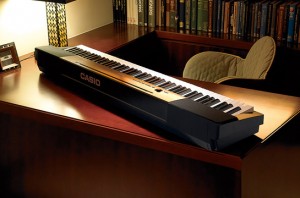 I’ll bet you didn’t see this one coming! The Casio Privia PX-150 is a relatively cheap stage piano with built in speakers. It’s light weight and with a quick push of the power button, you can instantly make music using the piano tone or one of the other 17 instrumental timbres that come included. It has a 1/4″ output jack and USB (midi in/out on some older models) and most importantly, you can use this keyboard as a full-size, weighted midi keyboard. I was so impressed with the weighting and texture of the keys on this piano that I instantly got one for my twin brother (who shares my sensibility in keyboard touch). For a hundred dollars more than most midi keyboard controllers, you get 88 nicely weighted, big keys for your soft synths with the additional functionality of having a portable, fully-playable instrument that you can use for its native sounds (no knobs but you can get those elsewhere!). Again, there are an abundance of these on the secondary market and you can find them for half price on craigslist!
I’ll bet you didn’t see this one coming! The Casio Privia PX-150 is a relatively cheap stage piano with built in speakers. It’s light weight and with a quick push of the power button, you can instantly make music using the piano tone or one of the other 17 instrumental timbres that come included. It has a 1/4″ output jack and USB (midi in/out on some older models) and most importantly, you can use this keyboard as a full-size, weighted midi keyboard. I was so impressed with the weighting and texture of the keys on this piano that I instantly got one for my twin brother (who shares my sensibility in keyboard touch). For a hundred dollars more than most midi keyboard controllers, you get 88 nicely weighted, big keys for your soft synths with the additional functionality of having a portable, fully-playable instrument that you can use for its native sounds (no knobs but you can get those elsewhere!). Again, there are an abundance of these on the secondary market and you can find them for half price on craigslist!
Arturia Beatstep
This little guy was a favorite for me earlier this year at NAMM and at at a price-point of only $100, it’s one of the most affordable items on this list. Bucking the trend on controllers, Arturia really kept function at the top of the list with the Beatstep which is more than just a set of 16-programmable knobs and velocity sensitive pads. It’s a full-fledged 16-step midi sequencer that can communicate via USB, Midi, even CV so it can work with virtually any synth you can throw at it. It even has a memory bank so you can store up to 16 programs or sequence patterns without any additional software. Whether you work in the box or you have a vintage synth collection, the beatstep is a great addition to any music programmer’s collection of gadgetry.
Synthesizers
Separate from the keyboard, the synthesizer is responsible for making the actual sounds you hear when you play the keyboard. Most folks these days are perfectly happy working “in the box” using mostly (if not exclusively) software synths that you can download for free using torrents are available for a fraction of the price of their hardware counterparts and there’s no shortage of information or discussion surrounding such pieces of software so we’ll just avoid them here. Instead, I’ll be focusing on hardware synths which, for whatever reason, tend to deliver more crisp, desirable results.
Moog Minitaur
Moog’s dedicated tabletop bass-synth is one of their most affordable synths (next to the new Werkstatt) but don’t let that fool you; the Minitaur offers full-powered, rich bass synthesis. The only catch is that it literally will not even detune to notes above C1 and some people don’t like how limited the range is. But for a dedicated bass synth, it doesn’t seem like something that would matter as much especially when they offer the Slim Phatty. As far as affordable analog bass synthesizers, this is bae right here.
Prophet 08
I probably should have warned you… I love analog. I collect vinyl records. My amps are all tube-driven. I build true-bypass analog effects modules. I write notes on paper. LOVE ANALOG. So it should be no surprise that my second pick on the synth list is the Dave Smith Prophet 08 desktop module (because you know I’m picky with my keyboards). Dave smith has been rocking the analog world for years and the prophet 08 is one of the finest he’s ever made. Not quite as fancy as the Prophet 12, the 08 has a more desirable layout with most every knob you need available at your fingertips for instant tweaking and live modulation. From mean saw leads to icey, brittle pads, this is an analog all-star that would make any producer cry tears of joy upon receiving it. And then probably tears of sadness when you get the bill because it costs $1500 bucks.
Dave Smith Tempest
Now don’t get the wrong idea, I’m not a Dave Smith fanboy (I’m more of the do-it-yourself kind of guy) but its hard to ignore the man’s legacy and his dedication to sonic excellence. I discovered he Tempest when a prominent producer friend busted it out during a jam sesh and it boy does this thing sound amazing. Apparently Dave Smith called in another legend, Rodger Linn (the man who came up with the “swing” on the MPC 60 and a master of musical electronics in his own right) to create this monster analog drum synth/ beatmaking station which really belongs in its own class of instruments right up there with the MPC. As you might expect, this fine piece of electronics costs 2 grand and it remains on my own “wish list” but considering its a double-legendary full-analog synth, the price is right. This is one of those rare pieces of gear where your music is just going to be better if you have this, it just sounds that good.
Roland Aria Tr-8
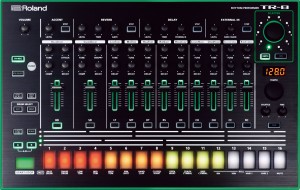 Another favorite from NAMM, the Roland Aria TR-8 is a more affordable drum-machine option that sports all the functionality of the legendary TR drum machines with a modern interface and, let’s face it, an awesome looking design scheme. It comes ready-to-go with all the classic drum sounds we know and love and it’s ease of use makes its instantly fun to jam around with. It’s pretty new so they still want $499 but maybe if you ask nicely you can strike a deal.
Another favorite from NAMM, the Roland Aria TR-8 is a more affordable drum-machine option that sports all the functionality of the legendary TR drum machines with a modern interface and, let’s face it, an awesome looking design scheme. It comes ready-to-go with all the classic drum sounds we know and love and it’s ease of use makes its instantly fun to jam around with. It’s pretty new so they still want $499 but maybe if you ask nicely you can strike a deal.
DJ Controller / CDJ / Turntables / Mixers
All my DJ gear is old, used vinyl gear. Technics 1200s are still the be-all-end-all and somehow they’re still out of production so I always tell people to look for used stuff which will depend entirely on your area (do your research! Google is your friend as is GEARSLUTZ). When it comes to digital DJing, nobody asks me for advice because I’m perfectly happy using a messy custom mapping on my first generation APC40 (purchased with drug money) in Traktor and leaning on the sync button like a third leg. CDJ’s seem like some over-hyped CD players which are cool if your car doesn’t play MP3s (like mine which is fine because where else am I going to keep my copy of The Chronic 2001? Not in my car? I don’t think so). So that leaves DJ controllers. (Seriously, I have no idea how CDJs work… I pressed the giant center circle button once and the damn thing wouldn’t flip open! I gave up after that).
Pioneer DDJ-SX2
While I can’t personally attest to the merits of the DDJ-SX2, my homie Max aka CRWNS swears by his DDJ-SX and it certainly offers the complete package in terms of a mixer/platter combo with the benefit of 8 triggers for on-the fly sampling and cueing. My boy has been killing it in New Orleans with the future bass sets on this thing so if he says it’s good, I’m inclined to take his word for it… even if it costs a grand. And people wonder why musicians are always so broke?
Microphones
The microphone is an essential tool to any producer. While there are many options that get prohibitively expensive, there are some very basic options that have much of the technology and resolution of significantly more expensive products and these can deliver very desirable results in the hands of someone who knows how to use them (a little research goes a long way! there’s no shortage of information on the internet)
Audio Technica AT-2020
This is one of the most inexpensive large-diaphragm condenser mics available but it is an absolute beauty and a staple at professional studios everywhere. Like most condenser mics, it requires phantom power from your interface / preamp but it’s also very, very sensitive and doesn’t require loud volumes for recording. As opposed to “small diaphragm” mics, these tend to be a little bottom heavy though with proper EQ in your DAW, these mics can be incredibly versatile and used for everything from room-recording drums to tracking a singer (use a pop filter though). The fancier models have things like variable cutoff and a different “polar pattern” settings but at $99 I love the simple classic flavor.
Shure SM-58
The classic SM-58. Chances are you have one of these laying around because they never break, ever. and they’re just solid, legendary microphones. While it’s true that Bono is storied to use this mic for recording exclusively, it’s also said that Michael Jackson sang Billy Jean through an SM-57 (same thing). This thing can give vocals a nice dark tone and though it’s a lot less sensitive than a condenser mic, it doesn’t require phantom power and can take a beating, so it’s perfect setting up under snares or right up against amps (or if you need a blunt instrument to smack a mother****er). It’s also $99.
Signal Processing
One of the secrets to getting that super-professional, polished sound is the use of carefully-crafted outboard hardware for signal processing. Before the prominence of computers and DAWS and unlimited free software available on the internet via torrents, all signal processing was done with outboard gear and many of our favorite plugins today are based of pieces of older recording equipment. While there are a lot of options available (and in a perfect world, I would go on a shopping spree at Vintage King and buy Shadow Hills everything), these are, in my opinion, the most affordable options for the intermediate producer looking to start their journey down the path of rack-mount gear.
dbx 286s
This is your basic bread-and-butter single channel strip which contains, in series, a preamp, a compressor, a de-esser, an enhancer, and finally an expander/ gate. Though it doesn’t have any fancy expensive tubes, the 286s has all the tools you need to track professional vocals (even in a live setting) such that you need not do any major processing on your signal as it enters your DAW. On sale for a mere $199, this is easily one of the cheaper but better sounding, more complete channel strips on the market.
dbx 1066
With outboard compressors you’re always going to get what you pay for– while Daft Punk had no problems with the Alesis 3630 compressor most people absolutely hate the things and as an owner of one myself, I have to admit they’re pretty worthless outside of their ability to sidechain pump nicely. That’s why I recommend the dbx 1066 as the most basic dedicated 2-channel compressor to buy. It’s got a very nice smooth operation and the gate doesn’t cause a bunch of artifacts like on the 3630. If anything, the 1066 can be a bit too much compression sometimes (when you want to get a really light, transparent squeeze) but for the price point ($429), you’ll be hard pressed to find a more musical, utilitarian 2-channel compressor/limiter/gate.
Aphex Exciter
Some people hate it. I love it. Waves makes an okay emulator but nothing can quite match a seperate, hardware-based exciter. “Lewdite, what the **** does an exciter do?” I’m so happy you asked! The greatest virtue of man is perhaps curiosity (Anatole France). An exciter is a tricky little circuit that actually adds upper harmonic content to whatever signal is input through a combination of eq and distortion. When placed at the end of your chain, it can help brighten your mix and add perceived loudness. When used on bass elements (especially sub) it helps bring out harmonics which allow the bass to translate better smaller speakers (an essential consideration as more and more people consume music on their phones). I like to throw it on anything that has a “dull” muddy sound and like magic, it actually does liven things up… I think they used to use these things to help in the conversion of very old audio formats but I’ve come to appreciate the musical properties is possesses. BBE also makes some very good gear but I like how tunable the Aphex Exciter is, though it’s slightly more expensive at $299.
Malekko 616
The Malekko 616 doesn’t get as much attention as the infamous MXR Carbon Copy analog delay fx pedal, I think this things blows it out of the water with a powerful feedback knob and a long delay that can create beautifully unique artifacts via analog degradation. Even better, it has a sweet “mod” effect that oscillates the pitch of the feedback which creates an analog tape effect and it has switchable “true bypass” so you can remove the buffer circuit from your analog signal path. Even though it’s small and it’s mono, it’s priced well for a hand-calibrated full-analog delay pedal at $150 and though it never goes on sale, you can get it directly from Malekko. Offer them a deal!
Headphones
In the age of portable music, everyone needs a good a pair of headphones and there’s more bullshit available than ever before. Sure, you wasted some cash on those Skullcandys or worse– Beats (it’s okay, it’s okay… he’s Dr. Dre. If buying those headphones meant I could hear one song off that album which shall not be named, I’d buy two pairs) but eventually you’re going to want something more professional to help you mix. Headphones are like ultra-near-field monitors and like the monitors above, everyone is going to have a different preference depending on what you’re using the headphones for and where you place your priorities.
Beyerdynamic DT 770 Pro
If comfort and transparency (a flat response) are your priority, look no further than the Beyerdynamic DT770s. The oversized velvety ear cups are the most comfortable available and when all other headphones are too uncomfortable, these are the the tried and true solution. The response isn’t quite as flat as my upgraded DT880 model but most people will like the slight boost it gives in the bass and treble, especially since mids tend to come through clearer in headphones. They’re by no means cheap…. but for the quality and comfort, $194 is a bargain for professional, studio quality cans you can mix on.
Sennheiser HD 280 Pro
The cheaper cousin of the HD 380s, the Sennheiser HD 280s offer almost all the functionality of their more expensive relative but they’re are on sale for only $99 which is cheaper than those Beats by Dre you purchased. Sennheiser has been a legendary name in headphones for many years and everyone I know who has a pair of these loves them– unfortunately, my weird-shaped ears don’t fit well into the oval shape of the Sennheiser ear cups so it’s always a good idea to try headphones on and see how they feel before you commit! (Just, uhhhh… wash your ears afterwards).
Alpine Headphones
This one is less for producers and more for listeners… but I suppose it could be used for dual purpose. Alpine has developed some “full immersion” headphones that have a vibrating headband to help reproduce “perceived bass” (one of the reasons headphones sound less bassy is because we partially perceive sub bass by feel). Our correspondent in the field, Sydney, has had these for about a week and has absolutely loved them. They can connect to your smartphone so you can engage the adjustable EQ or stream music to them directly and they boast impressive tech specs… no wonder they’ve recently begun selling them in the Apple Store. I’d prefer not to spend $300 on headphones because I’m a broke-ass musician and blogger but I have to admit, the vibrating headband is a very cool, novel way to tackle a problem that’s plagued headphones forever.
Accessories
A music producer’s life can be augmented with many things… Weed/dabs, big booty/bae, tacos/pizza (or in my case doughnuts/noodles)… it’s important not to forget these aspects of production either, for this is the muse– our inspiration, an essential part of creativity.
RTT Snapback
You’re not official until you’re rocking one of our OG RTT snapbacks on your dome. We don’t advertise it but when you buy one of these you join a secret club where all think you’re pretty ****ing cool because we have matching hats– we’re hatmigos, you and I. Does that mean I act like a weirdo and approach you in the street and give you a random high five if I see you? You know it does. Ask literally anyone. On Sale Now!
SSV Vaporizer
So you wanna get relaxed and in the creative zone but you don’t want to ruin your gear with a bunch of ash and smoke? Vapes have come a long way since the old box vapes and there’s no denying the awesome power of the Volcano but my personal favorite is 7th Floor‘s Silver Surfer Vape which offers a clean, updated take on the classic whip vape. The high grade ceramic heating element is located seperate from the other electronic components so that the air path is as direct and clean as possible. The angle helps keep herb from spilling back into the heating element and this thing is capable of producing thick clouds of vapor… because if you’re gonna put trees in the air… make ’em big.
Run The Jewels Merch and RTJ2 Vinyl (Or you know, whatever you’re in to)
While Dr. Dre has been growing old, sitting on his ass collecting checks for shitty headphones and making my life difficult by stealing away with Jimmy Iovene to Apple, Killer Mike and El-P have been reviving the true spirit of hip hop and absolutely schooling the hip hop community in the traditional sense of the word with a positive message and a demonstration that age isn’t just a number… its a representation of experience and wisdom. And you know, if you’re not into RTJ (what’s wrong with you?) it’s never a bad idea to support your favorite groups by purchasing some merch or music. This is the lifeblood of the music industry, it’s what keeps the big machine turning and what gives producers a place in this cold, cold world. Give your local record store a visit! Chances are they’ll have some holiday specials!
Dubs Earplugs
They sent us a couple pairs of these a little earlier this year and if you read my review, you’d know that I was pleasantly surprised by the comfort and performance of these earplugs. These are an essential to musicians who attend music festivals and for anyone who likes to get right up next to the speakers. Available for $25 a pair.
Trap Super-Pack Samples
 You know what they say when it comes to samples, “you can’t polish a turd” and with all the just awful sample packs available on the internet (some of these counterfeit Lex Luger packs are the worst offenders), it’s easy to end up with a library full of ugly, low quality samples that sound especially dull next to powerful soft synths like Massive and Sylenth. We’ve got you covered with our latest sample pack of 24-bit trap samples including some especially dope synth and drum samples as well as some riser FX and vocal hits just to have in your arsenal (I usually prefer to make those myself!).
You know what they say when it comes to samples, “you can’t polish a turd” and with all the just awful sample packs available on the internet (some of these counterfeit Lex Luger packs are the worst offenders), it’s easy to end up with a library full of ugly, low quality samples that sound especially dull next to powerful soft synths like Massive and Sylenth. We’ve got you covered with our latest sample pack of 24-bit trap samples including some especially dope synth and drum samples as well as some riser FX and vocal hits just to have in your arsenal (I usually prefer to make those myself!).
Baking Soda
There you have it friends, my favorite gear of the year. Sure, there’s lot of other really good gear but these are the things I liked the best in terms of functionality (and sometimes affordability). While all of this will help with music production, it’s important to remember that in the end, the most important thing is your taste and creativity– some of the best producers have made incredible music with very limited facilities. We love listening to all the music you guys send us and the most important part of making music is to never give up! You only get better with each song you make. Keep up the great work and let’s all make 2015 our year. Happy Hanukkah, Merry Christmas, Joyous Kwanza, Happy Festivus, and have an otherwise Trappy Holidaze everybody!
May you and your loved ones stay lifted and keep it 100 all the time.
Love,
Jeff aka Lewdite
 STAY IN THE KNOW! SIGN UP FOR THE RUN THE TRAP NEWSLETTER
STAY IN THE KNOW! SIGN UP FOR THE RUN THE TRAP NEWSLETTER


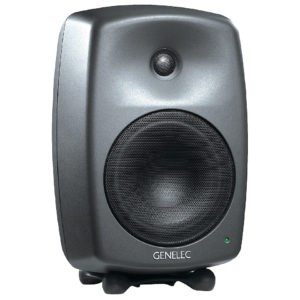
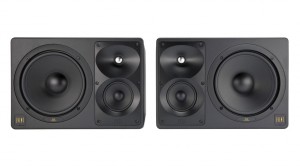
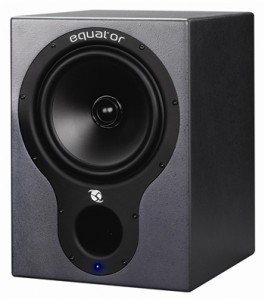

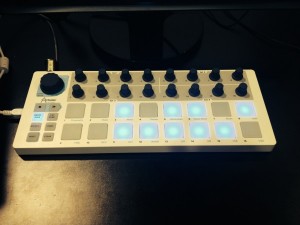
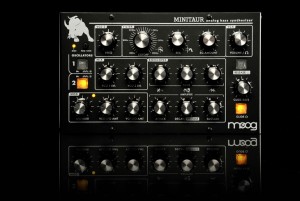
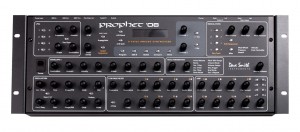
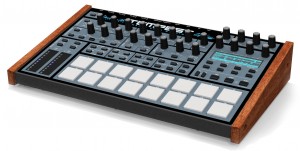
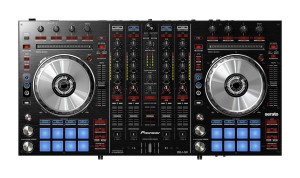
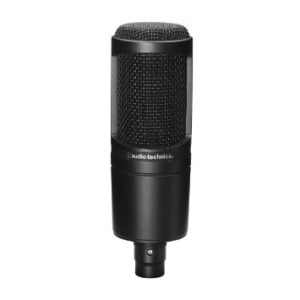


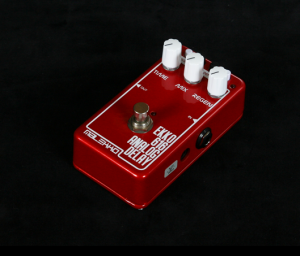
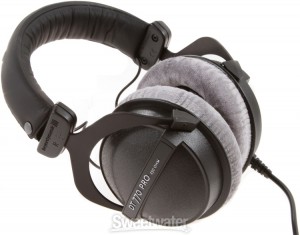
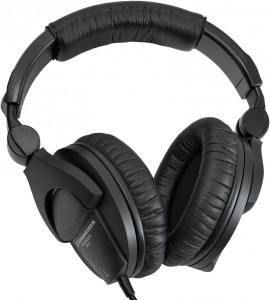
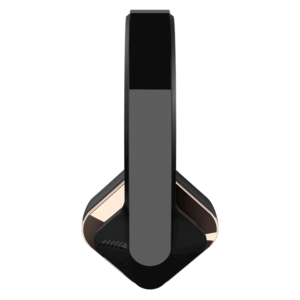


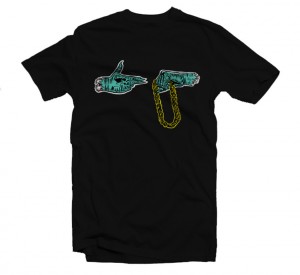
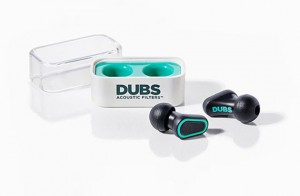
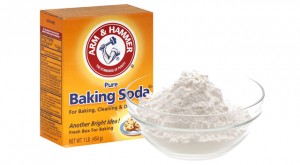








Leave a Reply
You must be logged in to post a comment.